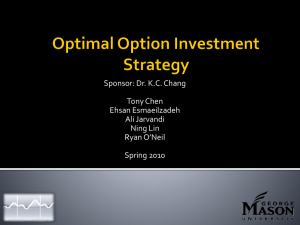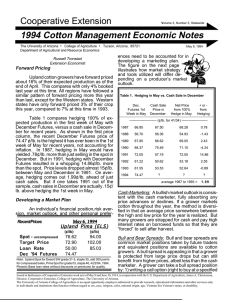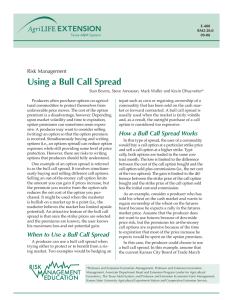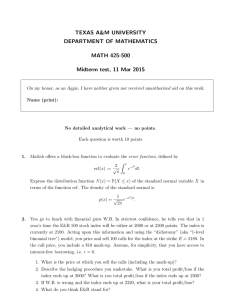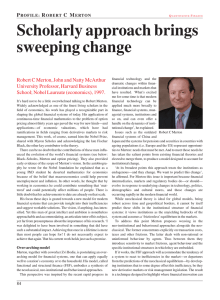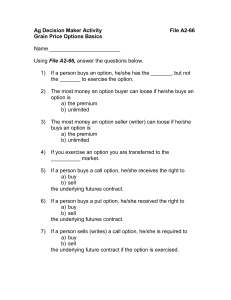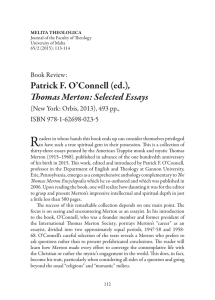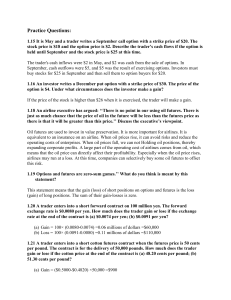TEXAS A&M UNIVERSITY DEPARTMENT OF MATHEMATICS MATH 425-500
advertisement
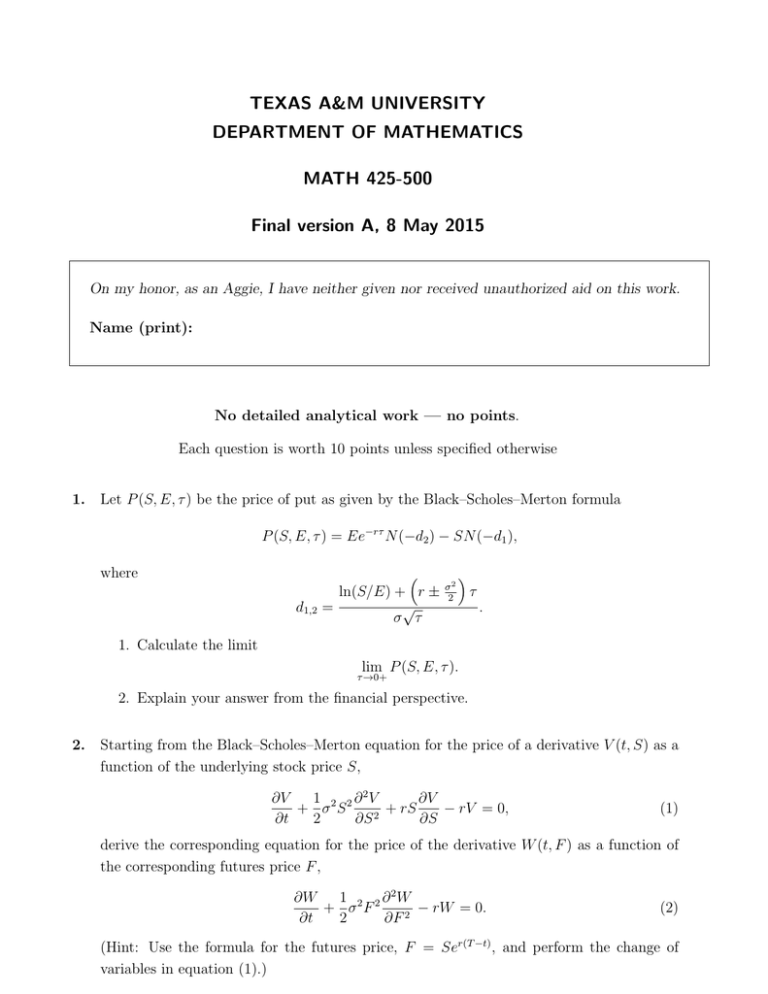
TEXAS A&M UNIVERSITY DEPARTMENT OF MATHEMATICS MATH 425-500 Final version A, 8 May 2015 On my honor, as an Aggie, I have neither given nor received unauthorized aid on this work. Name (print): No detailed analytical work — no points. Each question is worth 10 points unless specified otherwise 1. Let P (S, E, τ ) be the price of put as given by the Black–Scholes–Merton formula P (S, E, τ ) = Ee−rτ N (−d2 ) − SN (−d1 ), where d1,2 ln(S/E) + r ± √ = σ τ σ2 2 τ . 1. Calculate the limit lim P (S, E, τ ). τ →0+ 2. Explain your answer from the financial perspective. 2. Starting from the Black–Scholes–Merton equation for the price of a derivative V (t, S) as a function of the underlying stock price S, ∂V 1 2 2 ∂ 2V ∂V + σ S + rS − rV = 0, ∂t 2 ∂S 2 ∂S (1) derive the corresponding equation for the price of the derivative W (t, F ) as a function of the corresponding futures price F , ∂W 1 ∂ 2W + σ2F 2 − rW = 0. ∂t 2 ∂F 2 (2) (Hint: Use the formula for the futures price, F = Ser(T −t) , and perform the change of variables in equation (1).) 3. A bull call spread is composed of a long call at strike E1 and a short call at strike E2 , with E2 > E1 . 1. Graph the payoff diagram for the bull call spread. 2. Prove / argue that the setup cost (the price of the spread) must be greater than 0. 3. Hence show that the call price C(S, E, τ ) is decreasing as a function of E (other parameters being kept constant). 4. (20 points) Price the following American put option using the tree model: stock price now is S0 = 100, strike is E = 115, interest rate is 5%, time to expiration 3 months. 1. Construct the 3-level tree (1 level per month) if the stock price is expected to either go up by 10% or go down by 5%. Price the above option using this tree. 2. Describe the hedging procedure undertaken by a writer of the option who seeks to eliminate risk. You must assume that the holder of the option will do what is best for them (i.e. exercise early if optimal). Consider the price paths: (a) Up, Down, Up (b) Down, Up, Up Points: /50



